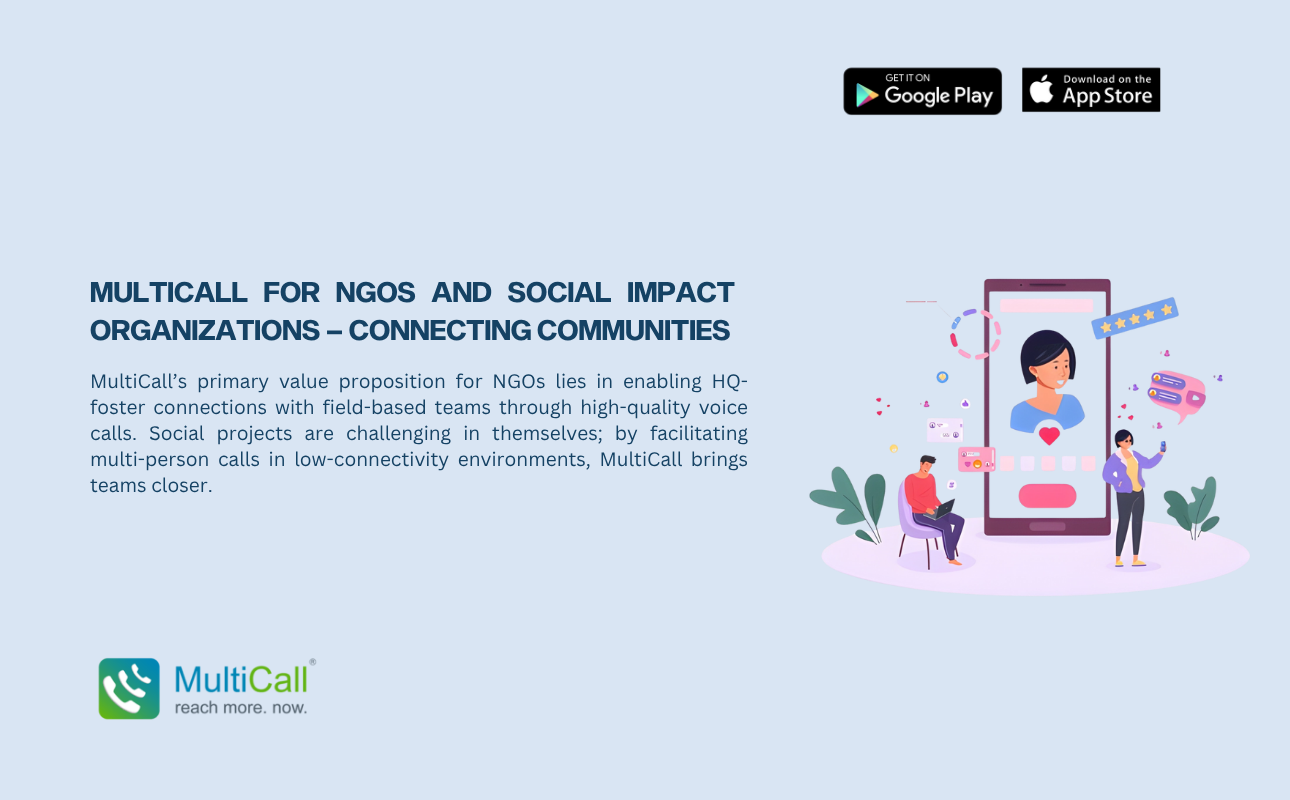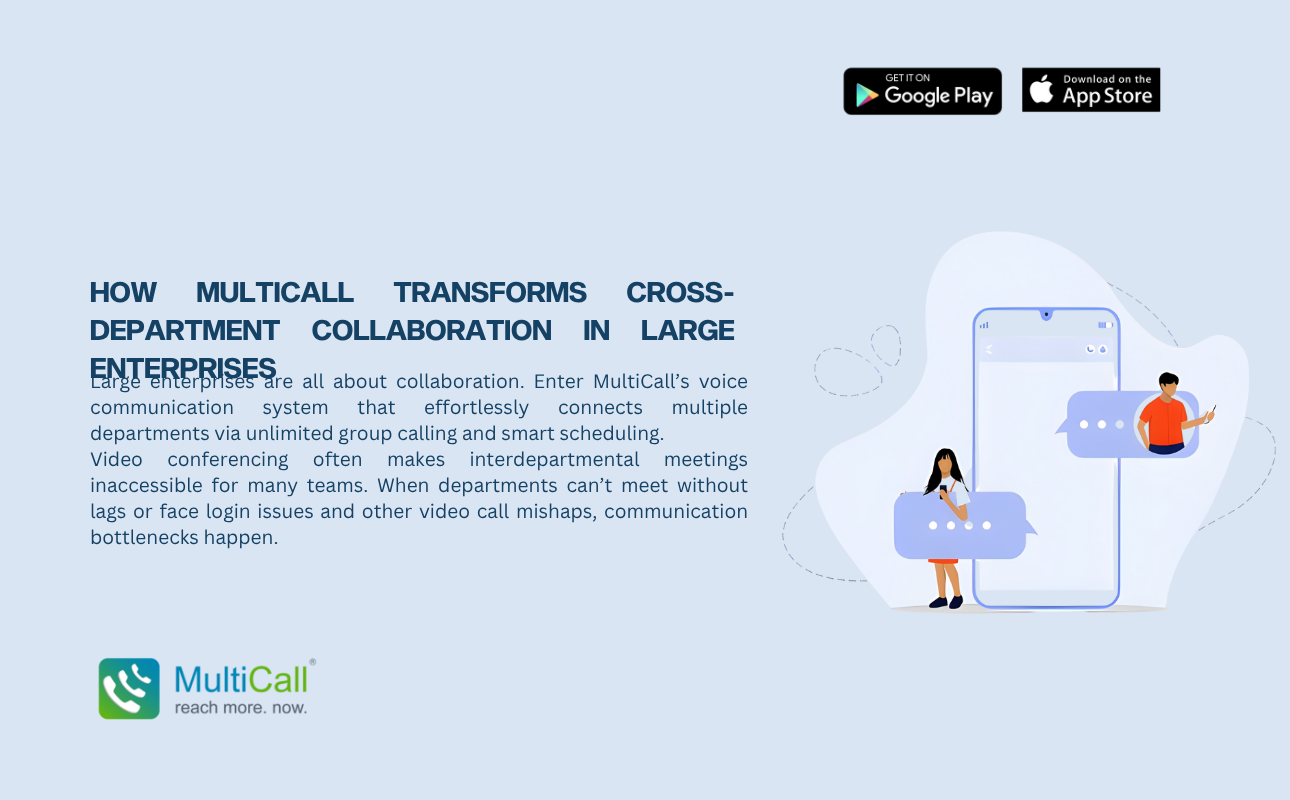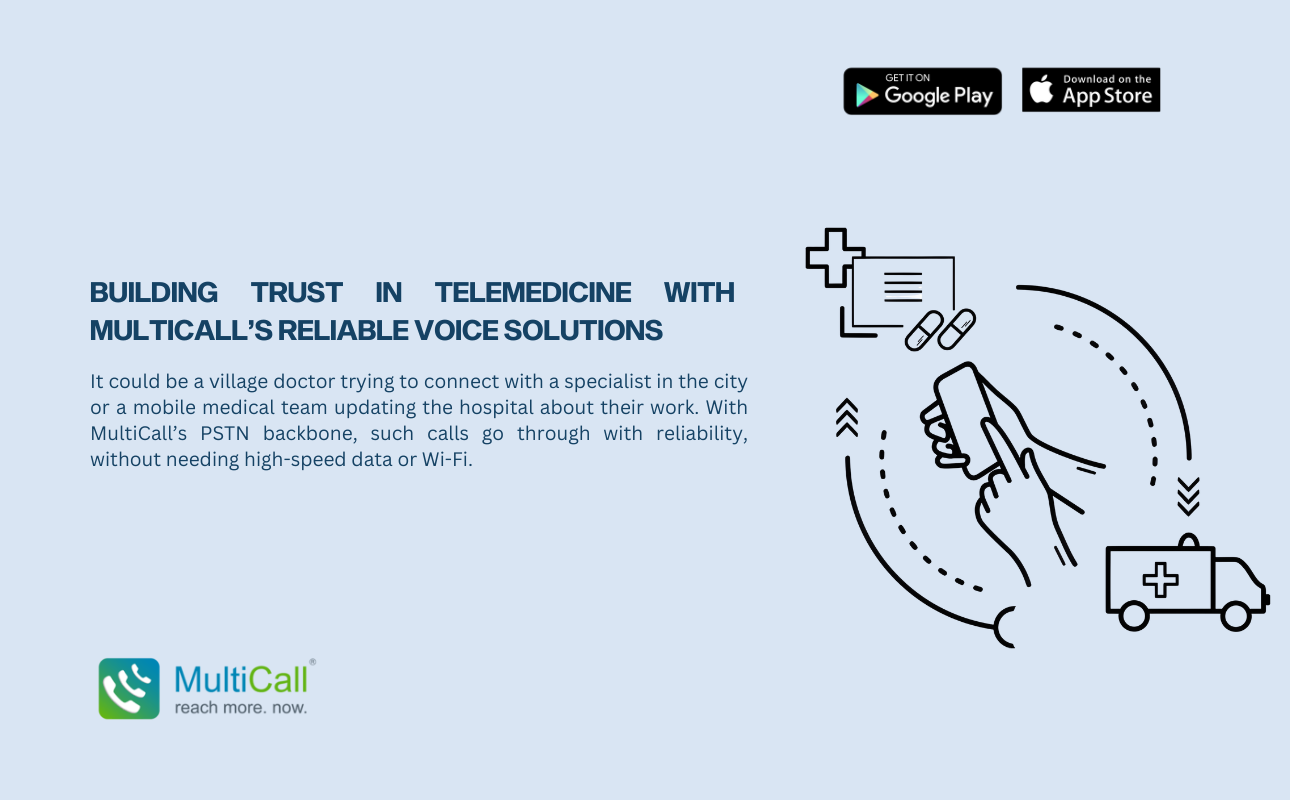
REDUCING DOWNTIME: MULTICALL AS A BACKUP COMMUNICATION CHANNEL FOR IT TEAMS
The problem is, when critical technology goes down, the communication channels IT teams depend on, such as VoIP, chat, or cloud-based services, often go with it.

From some random noise in the background, to the caller sounding unclear on what they’re talking about, we’ve all seen the problem of inefficient communication over the phone with another person. But sometimes, we, too, find ourselves inadvertently being such a person. Having communication over the phone that is effective entails multiple aspects in order to engage the receiver. On that note, ten tips to better communication over the phone:
It’s crucial to speak slowly, loudly and clearly, so callers understand what you are saying. Sounding flustered and speaking quickly may lead the person you’re calling to misunderstand that you want to rush and finish a call quickly. This can either appear rude to them, or worse, make them lose interest in having further conversations altogether. Set and maintain a composure during a phone conversation, keeping speech slow and making it distinct. This also means utilizing good, descriptive language so as to try evoking images in the listener’s mind.
Yes, we’ve been brought up as individuals taught to mind our language and use appropriate vocabulary. But this isn’t just about that. It also means the evasion of fillers such as “Hmm”, “Umm”, and “Uh”. Appearing unclear or confused, especially in a business conversation over the phone can result in the possible scenario of the receiver mistaking it either as not being transparent or being diffident. Both scenarios are detrimental to a conversation. Besides just fillers, it also means evasion of phrases like “I don’t know.”. You wouldn’t want to seem indifferent to someone you care to have a conversation with. This also means evading use of informal or slang words as well, as it can be subject to misunderstanding in certain cultures as not taking the conversation seriously, or worse, being impolite or rude. You wouldn’t talk to a superior saying “LOL”, would you?
Be it personal or professional; calls are a part of everyone’s daily routine; and more so at this time of the pandemic where we otherwise distance ourselves socially. Use of the client’s name can help personalize the call. But while doing so, it is essential to also ask for the correct pronunciation too. This is a gesture that is appreciated by customers/ business figures alike. At the same time, don’t exploit the name usage either. It’s to be included naturally during the conversation.
Even outside of a phone conversation, active listening is established as a fundamental part of interpersonal communication skills. During the call; being a better communicator entails taking a conscious decision to listen to another person and understand what’s being said. This is also considering that the person should not be interrupted while they’re talking. MultiCall steps in at this stage with the feature of Call Monitoring: where you can utilize the recording button to listen again and reflect in case anything was missed.
No, this is not just about the fact that smartphones’ proximity to one’s person can be detrimental to health. Keeping at the right distance also gives that much more leeway to speak clearly into the microphone, while also minimizing the about of background noise at the same time. Again, MultiCall’s Call Monitoring feature steps up: with the mute button there to assist you in silencing a caller should too much noise or disturbance occur. Keeping the phone too close can also mean the call can be disrupted due to the receiver being discomforted from the sudden loud noise created by mic feedback.
Remember that it’s an audio call, meaning that the receiver can only hear you, and not see you. In contexts such as a sales call, they may need time to think and consider what you pitched to them. But not being able to see that they’re thinking can often lead the caller to try push on further, which my discourage them from following through. So allow some time for them to be silent, pause, and consider. It also serves as a good way to provide room in ensuring that no one is interrupted.
As we have seen with group conference etiquette, preparation is paramount towards carrying it out effectively and efficiently. The same is essential for a conversation; especially in case of the possibility that you may forget something when you call someone. Not preparing also means the possibility of not saying what you meant to, which may be reflected as not taking the conversation seriously, and discourage the other person from further conversations or calls with you.
We may think that being able to do more than one task at the same time means we’re being more productive. But multitasking while on the phone means you’re having your attention partially diverted away from the call. This in turn means the risk of missing out certain points of what the receiver may have said. In the process, the solutions or inputs proposed by you may not be up to the mark, and if misperceived, may discourage the receiver from feeling like continuing to converse.
Location, too was seen as essential for an effective group conference. The same applies in equal proportion for a phone conversation. A quiet location means minimization of background noise, and avoiding other possible disruptions from the surroundings while on call. In the process you can provide full attention to the receiver , listen, and give appropriate solutions as well.
While location helps minimize noise, you may often forget in today’s day and age of phone technology, that the phone itself can be a huge disruption during the call. You probably would have even felt the frustration on hearing the dull buzz of either your phone vibrating, or the receiver’s. But here’s the good news. Addressing this comes to just a few simple steps:
Avoiding use of speakerphone: Speak either directly through the phone receiver or utilize earphones / headsets.
Do not place phone between the ear and shoulder as well; as doing so can risk muffling the microphone.
Silence the phone or set it to ‘Do not Disturb’. Alerts of other apps can still alert via vibration; which is picked up by the mic and can disrupt the call.
The very operation of a business, the start of any relationship, and the building of trust all are dependent on effective communication. And handled effectively over the phone with these ten tips; one will always be able to reach more, now.
“The art of conversation is the art of hearing as well as of being heard” – William Hazlitt



The problem is, when critical technology goes down, the communication channels IT teams depend on, such as VoIP, chat, or cloud-based services, often go with it.

MultiCall’s primary value proposition for NGOs lies in enabling HQ-foster connections with field-based teams through high-quality voice calls. Social projects are challenging in themselves; by facilitating multi-person calls in low-connectivity environments, MultiCall brings teams closer.

Large enterprises are all about collaboration. Enter MultiCall’s voice communication system that effortlessly connects multiple departments via unlimited group calling and smart scheduling.
Video conferencing often makes interdepartmental meetings inaccessible for many teams. When departments can’t meet without lags or face login issues and other video call mishaps, communication bottlenecks happen.

The MultiCall solution is centered around team calling. Group calls over voice make it possible for teams to coordinate schedules, share information, and discuss important topics. MultiCall enables users to connect in the fastest, most reliable, and most secure way possible.

It could be a village doctor trying to connect with a specialist in the city or a mobile medical team updating the hospital about their work. With MultiCall’s PSTN backbone, such calls go through with reliability, without needing high-speed data or Wi-Fi.

Efficiency equals profitability in business; central to that is communication. Countless organizations have miscalculated the cost of an unreliable phone or messaging application. Hours of delays, dropped calls, miscommunication, lost meetings, and disjointed coordination can translate into serious financial loss for an enterprise.
Communication has become less of an amenity and more of an investment. Enterprise voice communication software like MultiCall, with a complete solution for large teams, comes with a very clear and direct return on investment (ROI) through increased productivity, decreased downtimes, and operationally safeguarded communication.